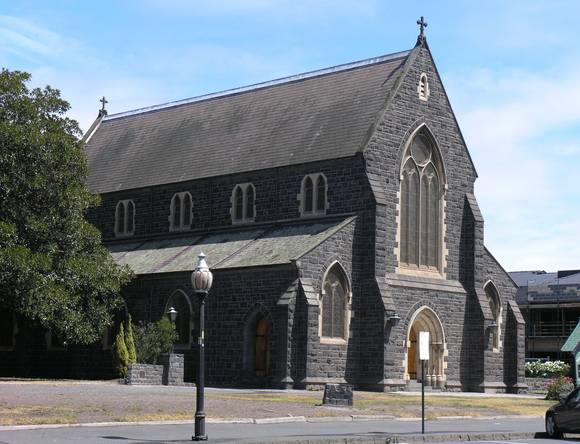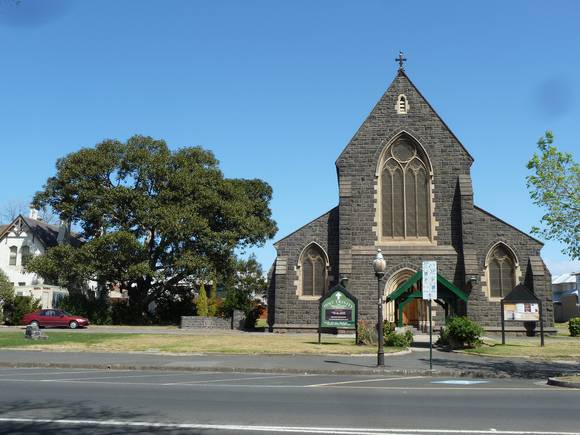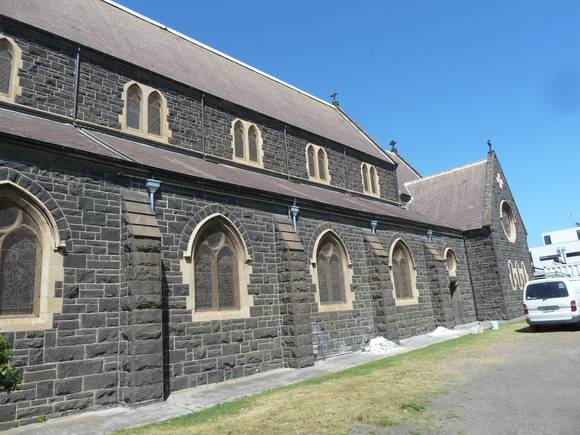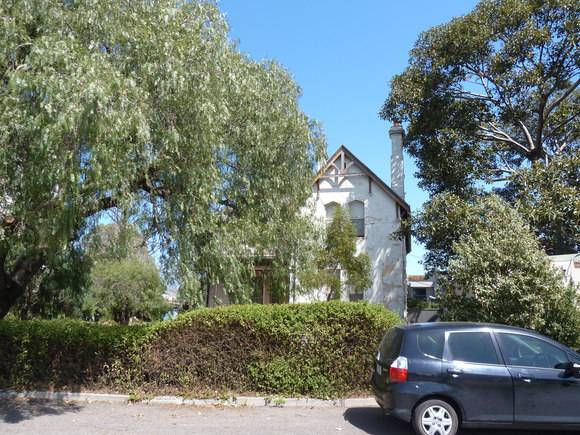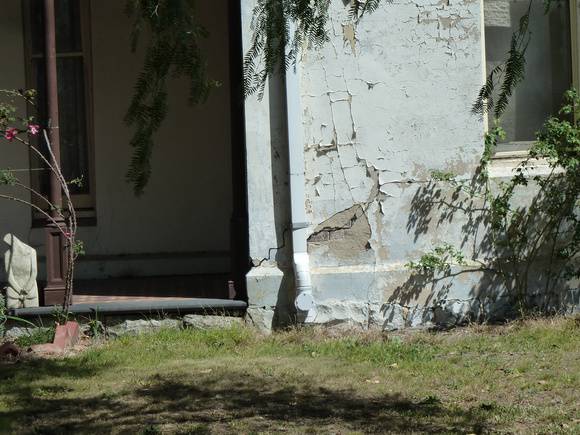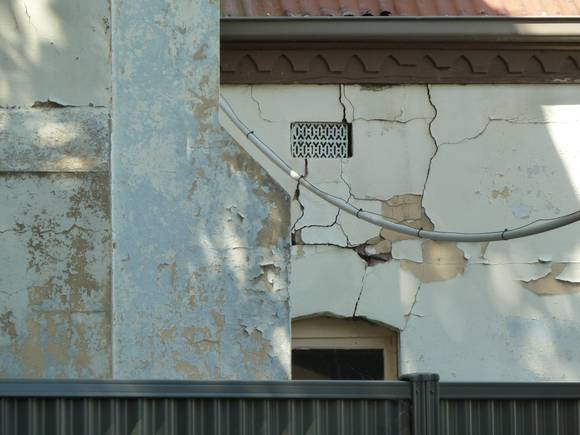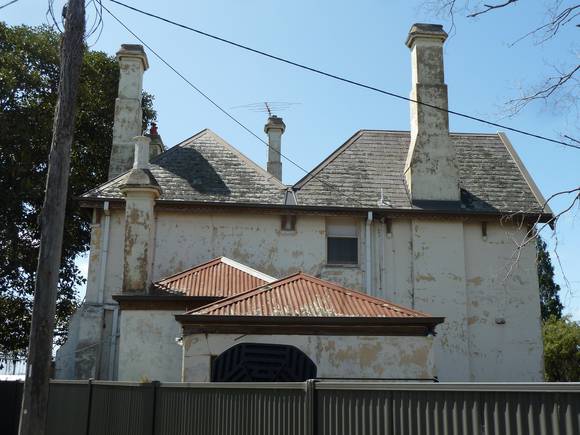| Back to search results » | Back to search page » |
|
HOLY TRINITY CHURCH, VICARAGE AND HALL
Statement of Significance
The foundation stone for Holy Trinity Church was laid by Bishop Perry
in 1871. The Gothic Revival style church, designed by architect
Leonard Terry, was built by Goss and Fleming from 1871-74 to replace
an earlier prefabricated building. The intended tower and spire were
never added. It is a substantial bluestone building with slate roof
comprising a five bay clerestoried nave with aisles, chancel and organ chamber.
The vicarage was built in 1886 to a design by Terry and Oakden. It
is a two storeyed, hip-roofed, stuccoed building in a Gothic Revival
style with Tudor and Italianate influences. It is surrounded by a
mature garden dominated by a large Moreton Bay Fig. The poet and
novelist Ada Cambridge lived at the vicarage from 1893 to 1910 with
her husband the Rev George Frederick Cross. The timber Sunday School
Hall facing Pasco Street was opened by the Archbishop of Melbourne in 1906.
Holy Trinity Church, Vicarage and Hall have architectural,
historical and scientific (horticultural) significance to the state of Victoria.
Holy Trinity Church, Vicarage and Hall are architecturally
significant as a highly intact ecclesiastical complex set in a
picturesque location on Nelson Place. The church is one of the finest
examples of the work of the Anglican diocesan architect Leonard Terry.
It is significant for its lofty proportions and its five bay
clerestoried nave with aisles in the English Gothic Revival manner.
The interior features a number of significant fixtures and fittings,
including stained glass by Napier Waller and William Montgomery, pipe
organ by William Anderson, baptismal font, and the original altar
reredos which now forms the entrance screen. The church also contains
features with maritime associations including the chancel rails which
are from the HMVS Cerberus and brass bell from the pilot vessel HMCS
Victoria. The Gothic Revival vicarage, in a rustic garden setting, has
considerable architectural significance. Pointed arches and trussed
gables and the asymmetrical massing of each gabled bay lend medieval
references to the design with Italianate influences evident in the
cast-iron verandah.
The vicarage has historical associations with Ada Cambridge,
1844-1926, an important figure in the history of Australian
literature. Ada Cambridge grew up in Norfolk, England and in 1870
accompanied her new husband Rev George Frederick Cross to Victoria.
They lived in various country parishes before moving to Williamstown
in 1893 where they remained until 1910. She was the first significant
Australian female poet writing three volumes of poetry and also
producing 21 novels, two autobiographies and contributing to journals.
She was also the first president of the Women Writers' Club. While
living at the vicarage in Williamstown, Ada wrote a number of works
including her autobiography Thirty Years in Australia and a companion
volume The Retrospect.
The Acacia karroo is of scientific (horticultural) importance as
it is rare in cultivation, there being only three other known trees in Victoria.
Group
Parks, Gardens and Trees
Category
Planting exotic


